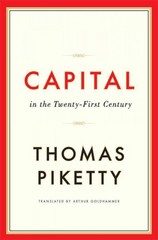1. J is a major company that invests in a range of high technology projects. The chieffinancial officer has recommended that all future investment proposals should besupported by an objective form of evaluation such as the results of a simulation or adecision tree before the board should even consider whether to proceedm z
Explain whether decision aids used in investment decisions are capable of providing
objective decisions. [5]2.
(i) Define the terms: (a) par swap. (b) extendable swap. (c) step-up swap. [4] (ii) Explain why a pension fund might want to purchase a par swap. [2] XYZ pension scheme enters into a three year interest rate swap contract under which the pension scheme will receive a fixed rate payment stream. The pension scheme is required to pay a floating rate payment stream in return. The following information is available regarding the swap and likely payments: . Term 3 years . Notional value of swap f100m (the notional amount of the swap is not exchanged) Payments are made in arrears semi-annually. . There are 360 days in a swap year. Period No. of days in Semi-annual forward period interest rate 180 1.52% 180 1.63% 180 1.75% auAWN- 180 1.91% 180 2.02% 180 2.14% (iii) Calculate the following, showing all your workings, using the above information: (a) present value of the floating rate payments [3] (b ) the annualised fixed rate of the swap [3] The pension fund trustees agree to enter into the interest rate swap on these terms. The transaction costs on the swap have the impact of reducing the annualised fixed rate of the swap by 0.02%. (iv) Calculate, showing all your workings, the impact on the value of the swap from transaction costs. [3] (v) Explain the impact on the value of the swap if interest rates fall during the term of the swap contract. [2]Country B has a relatively young but thriving motor insurance market with the local regulator, the Country B Monitoring Authority (CBMA), playing a very active role. Recently, motor premium rates have been set via a motor insurance tariff imposed by the CBMA. This meant that the CBMA set the premium insurers could charge for a motor insurance policy for each of the standard risk profiles it set. The CBMA decided to remove the motor insurance tariff with effect from 1 January 2020. It now allows insurance companies in Country B to charge a premium of their choice for policies written with effect from 1 January 2020, while still prescribing the rating factors to use. Industry analysts predict that this change will lead to a price war that could reduce premiums charged to an unsustainably low level. Company C is a small-sized motor insurer in Country B with a roughly 6% market share of the motor insurance market. Company C has been in operation for the past 5 years. Company C's pricing actuary believes that the removal of the motor insurance tariff will lead to a rate reduction of up to 10% compared to premiums charged last year. Company C's reserving actuary is about to perform a reserving exercise as at 31 March 2020. (i) Describe the factors that they should consider during the reserving exercise. [6] (ii) (a) Describe the reserving methods that could be used to estimate the Incurred But Not Reported (IBNR) claims for the current accident year. [3] (b ) Recommend, with reasons, the most appropriate reserving method. [1] Six months after the reserving exercise, Company C's market share has reduced from 6% to 2%. (iii) Suggest possible reasons for this reduction. [2]








